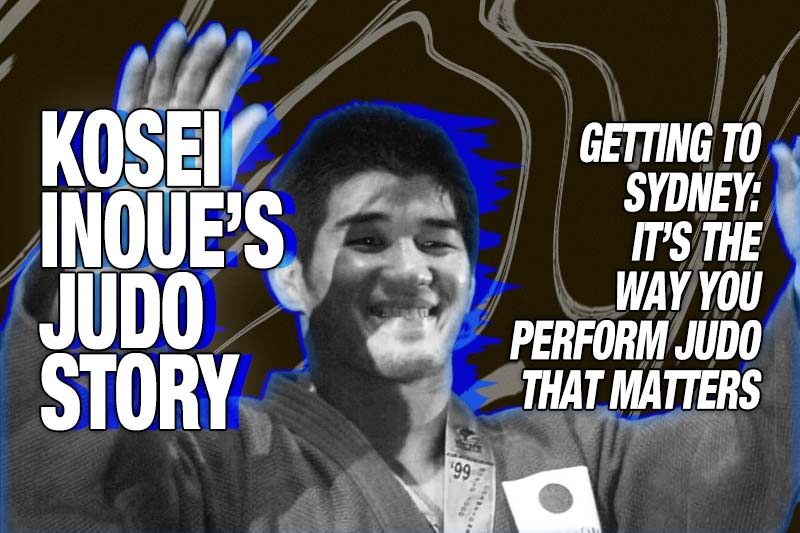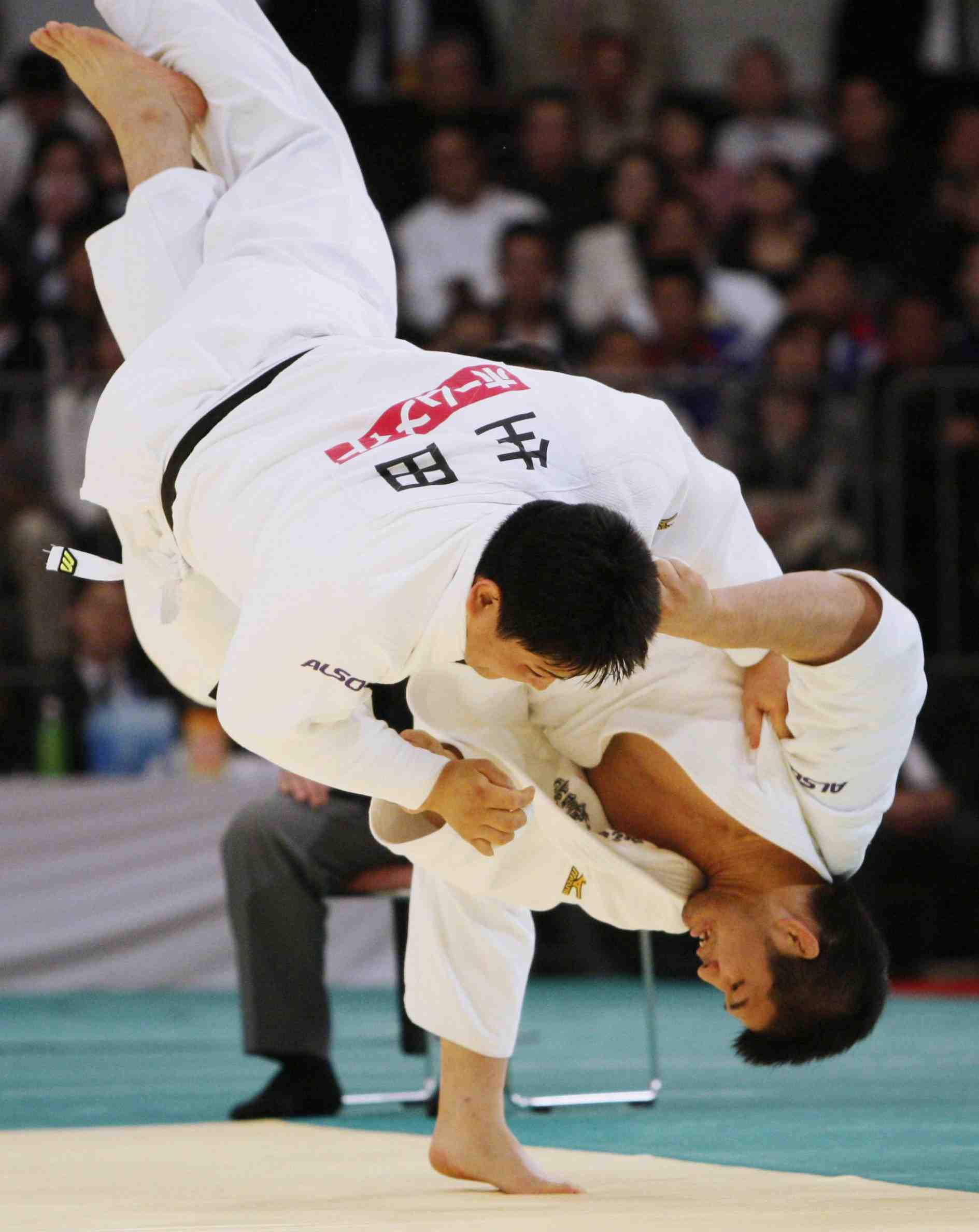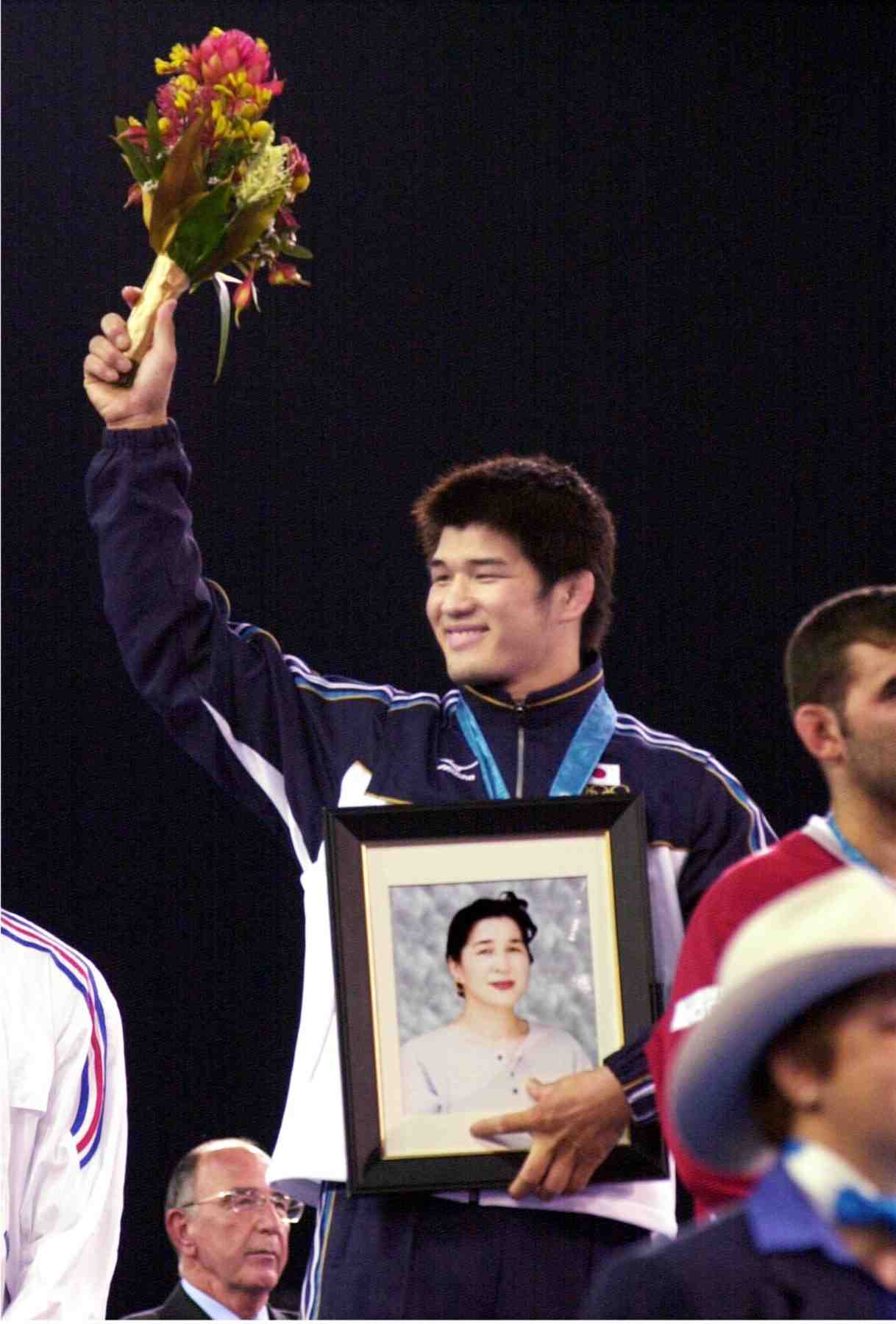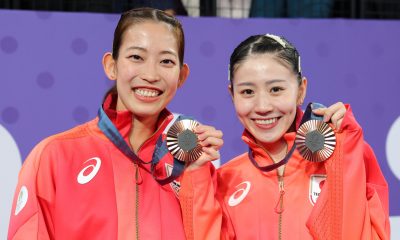

Part 6 of 14 parts
The Sankei Shimbun and JAPAN Forward wanted to know more about what it is that attracts men and women from widely divergent cultural and economic backgrounds to the Japanese modern martial art. We took the opportunity of the one-year delay in the 2020 Games to catch up with Japan’s national judo team men’s coach, Kosei Inoue, to ask about the role of the sport in his life, and what it takes to live by the principles embodied in the “gentle way.”
Excerpts of the interview are being featured daily in a 14-day series (Mondays, Wednesdays and Fridays). In Part 6, Coach Inoue talks about what it was like to compete in the 2000 Sydney Olympics, and what it took to get to—and win—the gold medal.
Excerpts of the interview follow.
After winning at the world championships in 1999, you won at the France International in February 2000, taking all four bouts by ippon. Then at the National Invitational Weight Class Championships in April (2000), which doubled as the selection of the national team for the Olympics, you also won all three bouts by ippon, exhibiting overwhelming strength. At your first Olympics in Sydney on September 21 of that same year, you took the gold medal in the finals with a vivid uchi-mata. Do you remember how it felt to win those matches?
I am proud that at my first Olympics, I stood on the big stage with the Japanese flag behind me, knowing that I had fought while remaining true to my own beliefs.
To give a specific example, from the time I was young my father had planted the idea in my mind that any judo that left an impression on people was judo that involved aggressive attacks.
Back in the days when I first started practicing judo, standing techniques were favored. As soon as someone tried matwork (grappling on the ground), mate (wait) was called. Aggressively going in to get the ippon was drilled into me by my father’s instruction in the context of those times.
In the [Sydney Olympics] finals, not only was I able to win with the dynamic uchi-mata throw I'd learned from my father, but in that moment I also embodied the type of judo that holds people spellbound.
The first technique I learned in judo was the seoi-nage (shoulder throw). But because I was bigger than other kids my age, by the time I was of school age I no longer needed this technique.
But when I got to high school and started practicing with the university team, one of the coaches, Nobuyuki Sato, told me, "If you're going to compete internationally, you need to redo training in katsugi waza (shoulder carrying technique)." He gave me one-on-one lessons. I won three bouts with that seoi-nage technique.
The uchi-mata I learned from my father involved jumping in and making a move. But there were limits to this style when facing larger opponents.
I wanted to think ahead to bouts with taller opponents in the international arena, and to the open-weight All-Japan championships that determined the number one player in Japan. Consequently, I mastered an uchi-mata move that brought my opponent in closer to me. That work paid off in the third bout at the Sydney Olympics.
Of course, there was pressure. Japan's judo team included so many superstars, like Tadahiro Nomura (who went on to win three Olympic gold medals in a row in the 60-kg class), Hidehiko Yoshida (gold medalist at the Barcelona Olympics), Shinichi Shinohara (silver medalist in the men's over 100-kg class in Sydney), the Nakamura brothers (Yukimasa, the elder brother who competed in the 66-kg class, and Kenzo, the younger brother who competed in the 73-kg class), and Makoto Takimoto (who took the gold medal in the men's 81-kg class in Sydney). Of all of us, I was the youngest.
I was chosen to be the flag bearer for Team Japan because I had been the world champion the year before. At the time, though, I was mainly thinking about winning for myself, and felt only pressure to prove I could take the gold.

Is it true that, at the medal ceremony, you held up a photo of your late mother, Kazuko, that you'd hidden under your team jacket?
The moment I won my mind was blank. But before the competition began, I had an image in my mind of how the scene would play out.
Holding up my mother's photograph was not a spur-of-the-moment action, although it would never be allowed today. The local staff at first tried to stop me, but when I explained, they let me go ahead saying, "Just hide it for now. Once you get up on the podium, no one can stop you."
Honestly, I wanted her to be alive to see me step up on that podium. But I was able to make her the mother of the world's number one.
To be continued
Read Other Segments of the Kosei Inoue Judo Story:
- Part 1 [Kosei Inoue’s Judo Story] What it’s Like Being National Coach in the midst of COVID-19
- Part 2 [Kosei Inoue’s Judo Story] The Attraction of Competing Against Someone Bigger and Stronger
- Part 3 [Kosei Inoue’s Judo Story] Learning the Lessons of Winning, Losing and Moving On Without a Grudge
- Part 4 [Kosei Inoue’s Judo Story] Continuing On Through Slumps and the Pain of Personal Loss
- Part 5 [Kosei Inoue’s Judo Story] Lessons Learned from Competing Against My Brother
- Part 7 [Kosei Inoue’s Judo Story] The Thrill of Becoming a National Champion
- Part 8 [Kosei Inoue’s Judo Story] The Responsibility that Comes with Winning
- Part 9 [Kosei Inoue’s Judo Story] How His Past Shaped His Current Outlook as a Coach
- Part 10 [Kosei Inoue’s Judo Story] Overcoming the Physical and Mental Demons of a Major Injury
- Part 11 [Kosei Inoue’s Judo Story] Knowing How to Make a Comeback and When to Call it Quits
- Part 12 [Kosei Inoue’s Judo Story] The Turning Point for Judo’s Revival in Japan
- Part 13 [Kosei Inoue’s Judo Story] Reaching Beyond Home to Strengthen the Team and Bring Results
- Part 14 [Kosei Inoue’s Judo Story] ‘I Love Coaching - I’m Determined to Give It My All’
Interview by: Mitsuru Tanaka

Nagoya Basho Tournament Records
| Day | Opponent | Result |
|---|



















You must be logged in to post a comment Login